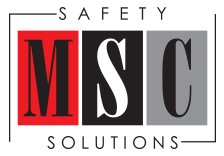Understanding the New ANSI Heat Standards
As we strive to improve workplace safety, staying updated with the latest standards and regulations is crucial. Recently, the American National Standards Institute (ANSI) introduced new heat standards aimed at enhancing protection for workers exposed to high temperatures. In this blog post, we’ll explore these new standards, their significance, and how they impact workplace safety.
What are the New ANSI Heat Standards?
The ANSI/ISEA 201-2022 standard, titled “American National Standard for Heat Stress Management,” outlines requirements for assessing, mitigating, and managing heat stress in occupational settings. These standards are designed to help employers and safety professionals create safer working environments for employees exposed to heat.
Key Components of the ANSI Heat Standards:
- Heat Stress Assessment:
- The standards provide guidelines for evaluating heat stress risks in the workplace. This includes assessing environmental conditions, workload, and worker characteristics.
- Employers are encouraged to use tools like Wet Bulb Globe Temperature (WBGT) or Heat Index to measure environmental heat.
- Heat Stress Mitigation:
- The new standards emphasize the importance of implementing control measures to reduce heat exposure. This includes engineering controls (e.g., ventilation), administrative controls (e.g., work/rest schedules), and personal protective equipment (PPE) such as cooling vests.
- Employers are also encouraged to provide adequate hydration, shaded areas, and regular breaks to workers.
- Training and Education:
- Training programs are a critical component of the new standards. Employers must ensure that workers are educated on the risks of heat stress, symptoms of heat-related illnesses, and preventive measures.
- Training should also cover the proper use of PPE and emergency response procedures for heat-related incidents.
- Monitoring and Recordkeeping:
- Continuous monitoring of environmental conditions and worker health is essential. The standards recommend using real-time monitoring systems to track heat stress levels.
- Employers are required to maintain records of heat stress assessments, control measures, and incidents of heat-related illnesses.
Why are these Standards Important?
Heat stress is a serious occupational hazard that can lead to heat exhaustion, heat stroke, and even fatalities. The new ANSI heat standards are a significant step forward in protecting workers from these dangers. By following these guidelines, employers can reduce the risk of heat-related incidents, improve worker health and productivity, and ensure compliance with regulatory requirements
Implementing the New Standards
Adopting the new ANSI heat standards may require changes to existing workplace practices. Here are some steps employers can take to implement these standards effectively:
- Conduct a Heat Stress Risk Assessment:
- Evaluate your workplace to identify areas and tasks with high heat exposure. Use the recommended tools and methods to measure environmental heat levels.
- Develop a Heat Stress Management Plan:
- Create a comprehensive plan that includes control measures, training programs, and emergency response procedures. Ensure that this plan is communicated to all employees.
- Invest in Appropriate PPE and Equipment:
- Provide workers with the necessary PPE, such as cooling vests and hydration packs. Consider installing engineering controls like fans or air conditioning in high-heat areas.
- Train Employees:
- Implement training programs that educate workers on heat stress risks, symptoms, and preventive measures. Regularly update these programs to reflect the latest standards and best practices.
- Monitor and Review:
- Continuously monitor heat stress levels and worker health. Keep detailed records of assessments, control measures, and incidents. Regularly review and update your heat stress management plan based on monitoring data and feedback from workers.
Conclusion
The new ANSI heat standards represent a vital advancement in occupational safety. By understanding and implementing these standards, employers can create safer working environments and protect their employees from the dangers of heat stress. For more information on workplace safety and the latest standards, visit MSC Safety Solutions.





